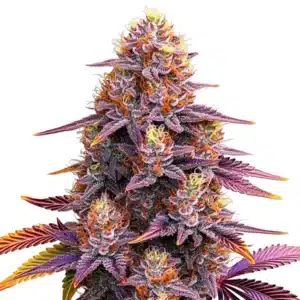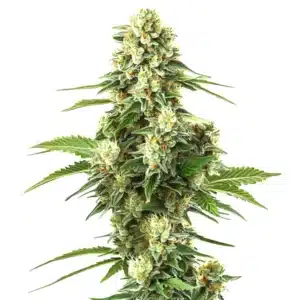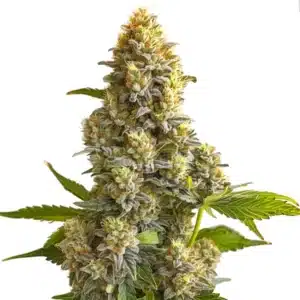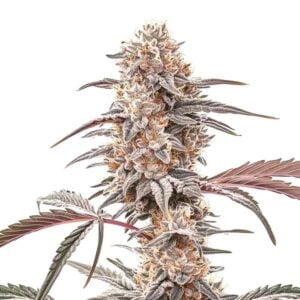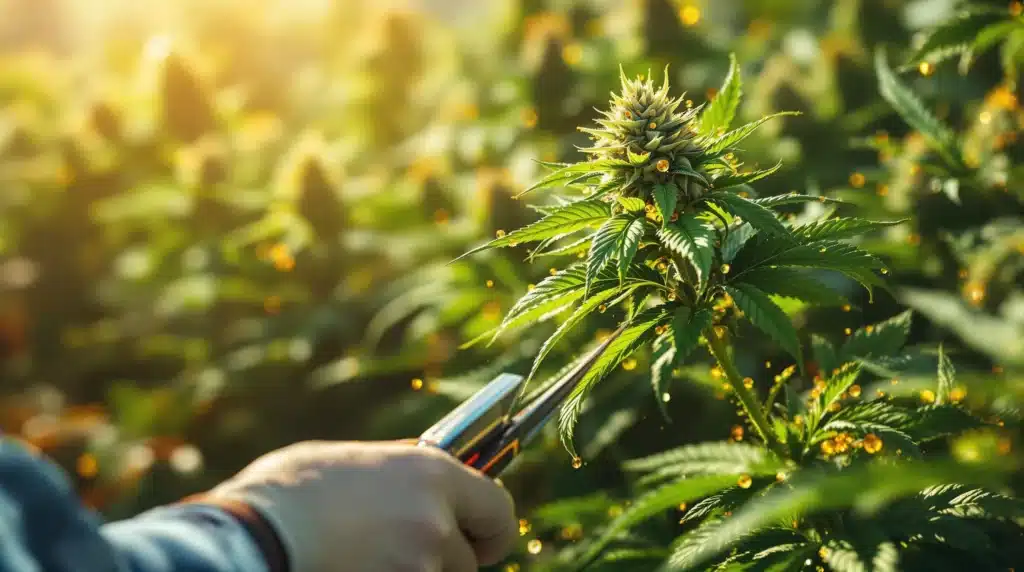
How Long Does It Take for Trichomes to Transition from Cloudy to Amber
For both novice and seasoned cannabis growers, observing the development of trichomes is crucial to identifying the perfect time to harvest your plants. As they progress through their life cycle, trichomes evolve from clear to cloudy and finally to amber. This transition is not just about aesthetics; it is an essential factor in determining the potency and effects of the final product. Let’s dive into the fascinating process of trichome maturation and what you can anticipate during this vital transition.
Stages of Trichome Development
Trichomes are the minuscule, hair-like structures located on the surface of cannabis plants. They play a significant role as they contain cannabinoids and terpenes, which contribute to the plant’s effects and flavor profile. The journey from clear to amber trichomes occurs in three main stages. Here they are, detailed for you:
Recommended Strains
- Clear Trichomes: This stage indicates that your plant is still in the early flowering phase. At this point, THC levels are low, implying that the plant has yet to achieve peak potency, and the experience may be less desirable.
- Cloudy Trichomes: When trichomes take on a cloudy appearance, it suggests that the THC levels are at their highest. Many growers prefer to harvest before reaching the amber stage, as this is often associated with a more uplifting and euphoric high.
- Amber Trichomes: Upon reaching this stage, THC starts converting to CBN, which can provide a more relaxing and sedative effect. Some growers intentionally allow their plants to reach this point for a specific experience.
Grasping these stages enables you to evaluate the optimal time for harvesting, tailored to your desired effects. Keeping a close watch on trichome coloration as you approach the harvest window is key to achieving the results you want from your plants.
Timing the Shift from Cloudy to Amber Trichomes
The timeframe for transitioning from cloudy to amber trichomes can vary widely based on a plethora of factors such as strain genetics, environmental conditions, and light cycles. Most growers typically observe this shift occurring within 1 to 2 weeks following the emergence of cloudy trichomes. However, this timeframe is flexible; it may take longer for some cultivators or even happen sooner, depending on the unique circumstances of each grow.
To enhance your chances of creating your ideal harvest, many growers recommend inspecting their plants daily or every few days. This routine monitoring allows you to make informed decisions about when to harvest based on the trichome appearance that aligns with your personal goals that day.
Promos & Deals
Influential Factors in Trichome Change
The rate at which trichomes change color can be influenced by several key factors. These elements can greatly enhance your cultivation practices:
- Strain Variability: Different strains, whether Indica or Sativa, may exhibit distinct growth patterns. Generally, Indica strains may develop amber trichomes at a faster pace than their Sativa counterparts.
- Lighting Conditions: The type and intensity of light your plants receive during the flowering stage can significantly affect trichome development and maturation, impacting the overall quality of your harvest.
- Optimal Temperature and Humidity: Maintaining ideal environmental conditions leads to healthier plants, which can positively influence the speed at which trichomes mature.
By giving attention to these factors throughout the growth cycle, you can achieve a high-quality harvest that’s rich in potency and flavor. It is essential to create a nurturing environment tailored specifically to the needs of your chosen strains.
Key Signs to Monitor
As you keep an eye on your plants, several signs may indicate readiness for the transition to amber trichomes. Look out for the following cues:
- Trichome Color Changes: Utilize a magnifying glass or jeweler’s loupe for close inspection of your trichomes, closely tracking these color changes over time.
- Plant Vitality: A healthy cannabis plant will display vibrant colors and robust growth, signaling that it is approaching peak maturity.
- Overall Plant Appearance: The pistils (the plant’s hairs) will shift colors from bright white to shades of orange or brown, a visible sign that maturity is near.
These observances will help you accurately gauge how close your plants are to achieving that coveted amber hue, enabling you to plan your harvesting effectively and confidently.
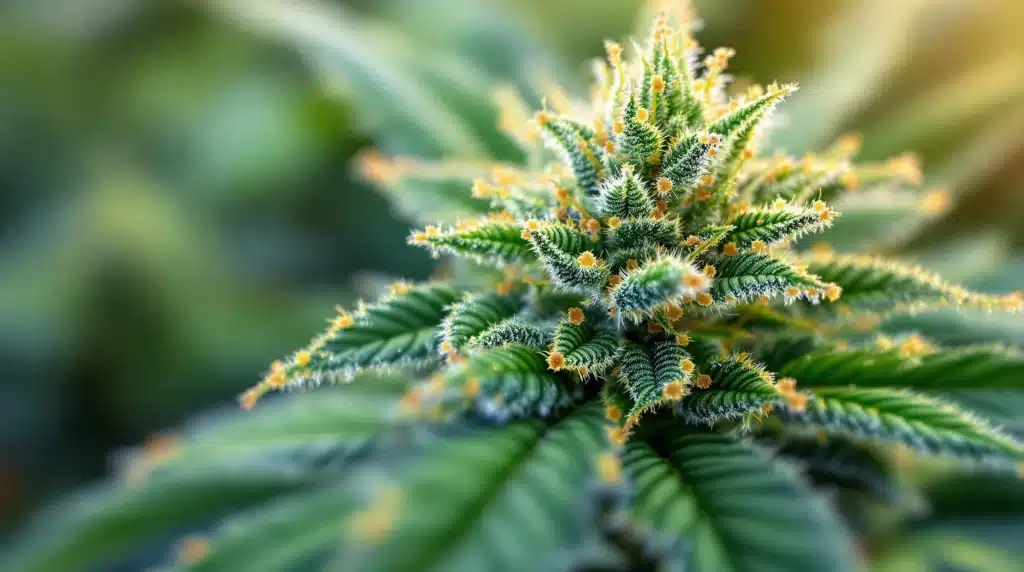
Determining the Right Harvest Time
Choosing the correct timing for your cannabis harvest can significantly impact both its potency and flavor profile. Here’s some useful advice to guide your decision:
- Preference for Amber Trichomes: If your goal is to experience a more relaxing and sedative effect, aim for about 20% to 30% of your trichomes to be amber.
- Preference for Cloudy Trichomes: For those desiring a more uplifting and energizing experience, consider harvesting when you observe roughly 90% cloudy and 10% amber trichomes.
- Personal Experimentation: Everyone’s body reacts differently, so don’t hesitate to experiment by harvesting at different trichome stages to discover your optimal experience.
Taking the time to carefully assess trichome color when deciding when to harvest can significantly enhance your overall experience with your cannabis plants. Keep in mind that finding the perfect timing is an individual journey influenced by personal preference.
Keeping Track of Your Findings
As a grower, maintaining accurate records regarding your plants’ development can pay off over time. Document when you first notice cloudy trichomes and how long it takes for them to transition to amber.
These notes will help reveal trends linked to specific strains and growing conditions, leading to more informed choices in your future growing endeavors. You may observe that some strains have a consistent maturation pattern, allowing for more precise planning in the future.
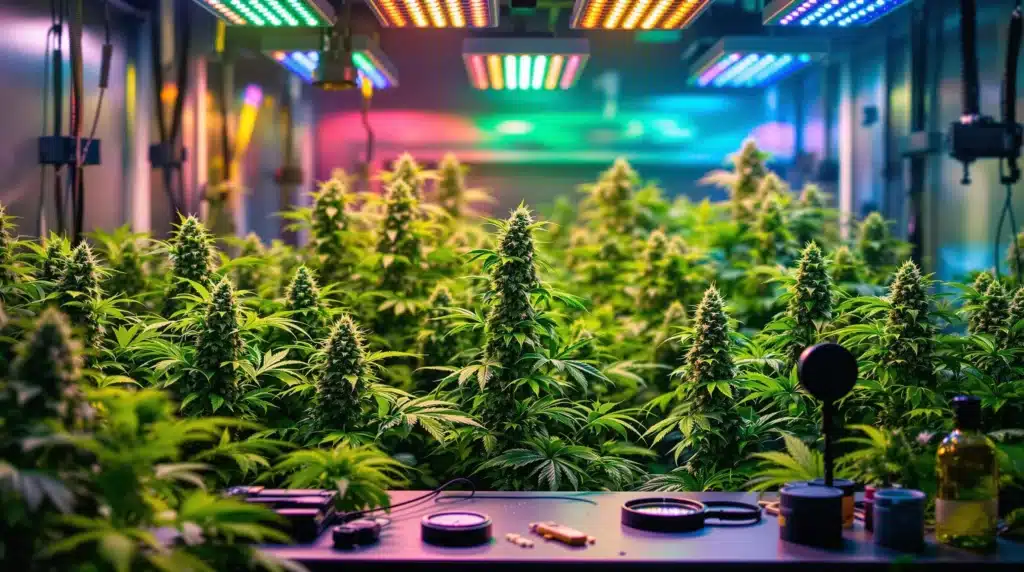
Addressing Common Misunderstandings
Throughout your cannabis cultivation journey, you might encounter several misconceptions regarding trichome development and harvesting. Here are a few key misunderstandings to clarify:
- Amber Always Means Overripe: Some people mistakenly believe that amber trichomes automatically indicate overripe plants; in reality, this transformation indicates that THC has converted to CBN, which many consumers appreciate.
- Uniform Maturation Across All Trichomes: Each plant and even different branches on the same plant may mature at varying rates. Regular monitoring is essential to capture the best moment for harvest.
- Overemphasis on Timing: Focusing excessively on timing can lead to neglecting other vital factors such as plant health and overall appearance, which play a significant role in your harvest quality.
Dispelling these misconceptions will help you refine your cultivation practices and achieve better results throughout your growing experience.
Influence of Seasonal Changes
Your growing environment can greatly affect trichome development, especially for outdoor growers. Seasonal variations such as daylight duration, temperature fluctuations, and humidity changes can impact the timeline for trichome maturation.
In regions with shorter growing seasons, for instance, you may find that your plants flower more rapidly, resulting in a quicker transition of trichome colors compared to locations with extended growing seasons. Being aware of these seasonal effects allows you to adjust your cultivation strategies accordingly, ensuring that you provide optimal conditions for successful trichome development.
FAQs
How can I tell when my plants are ready to harvest?
To determine whether it’s time to harvest, closely check the trichomes using a magnification device. When you see mostly cloudy trichomes with some amber ones, it’s a strong indication that your plants may be ready for harvest.
Is there a difference between cloudy and clear trichomes?
Absolutely! Cloudy trichomes indicate peak THC levels, while clear trichomes suggest that the plant still has some maturing to do, indicating it hasn’t achieved optimal potency yet.
Can I speed up trichome maturation?
While there are no guaranteed ways to expedite maturation, ensuring optimal light, temperature, and nutrient levels can create a favorable environment for healthy growth and development.
What if my trichomes are mostly amber?
If the majority of your trichomes are amber, consider harvesting soon. This stage typically results in a heavier, more relaxing experience, which many consumers seek.
Do all strains develop trichomes at the same pace?
No, not all strains progress uniformly. Certain strains may mature more quickly, while others may take longer. Tracking individual strain performance will provide valuable insights for future growth cycles.
How often should I check my trichomes?
It’s best to check your trichomes every few days as you approach the harvesting window. This frequent observation can help you pinpoint the ideal moment for harvest.
Whether you are just starting your journey or have years of experience behind you, knowing how long it takes for trichomes to transition from cloudy to amber can significantly shape your harvest results. By regularly observing and applying what you’ve learned about trichome development, you can optimize your results and enjoy the finest quality from your cannabis plants.



